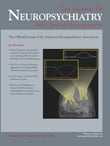Phenytoin Dependence Syndrome: A Case Report
To the Editor: Phenytoin sodium is an antiepileptic drug that is related to the barbiturates in chemical structure but has a five-membered ring. The chemical name is sodium 5, 5-diphenyl-2, 4-imidazolidinedione. The primary site of action appears to be the motor cortex where spread of seizure activity is inhibited. Possibly by promoting sodium efflux from neurons, phenytoin tends to stabilize the threshold against hyperexcitability caused by excessive stimulation or environmental changes capable of reducing membrane sodium gradient.
The problem with antiepileptic drugs is that there is no consensus among physicians regarding when to stop these drugs. The patients continue to take them for a long duration, even lifelong, making them susceptible for adverse effects such as cognitive decline. Many patients do continue the use of antiepileptic drugs due to fear of subsequent seizures, stigma of seizures, restriction in activities due to illness, and many others. A critical review of 28 studies encompassing 4,571 patients noted that the risk of seizure relapse after antiepileptic drug withdrawal ranged from 4% to 34% at 1 year and 9% to 39% at 2 years. 1 In various studies, there was no convincing evidence for the development of a withdrawal syndrome following the reduction and cessation of treatment with antiepileptic drugs.
Abrupt withdrawal of phenytoin in epileptic patients may precipitate status epilepticus and other nonspecific symptoms. Thirty-eight patients took 200 to 400 mg of phenytoin daily for 1 to 8 months and then stopped the drug abruptly; no withdrawal symptoms were noted. 2 , 3 A study to look for withdrawal symptoms in patients on antiepileptic drugs observed the following symptoms with phenytoin: anxiety, tension, depression, shaking, nausea, palpitations, and faintness. 4 But an extensive literature search failed to mention dependence syndrome on phenytoin.
Case Report
A 42-year-old man was referred from the Department of Neurology complaining of insomnia and anxiety symptoms for the last 2 months. He was known to have idiopathic generalized tonic clonic seizures and was being treated with tab phenytoin for the last 22 years. He was seizure-free for the last 15 years and experienced gum hypertrophy as a side effect of his drug treatment.
The patient reported that after his last seizure he noticed that whenever he missed his dose of phenytoin for any reason, he would experience craving, restlessness, irritable mood, tremulousness, and inability to sleep. He also reported that as the scheduled time neared for the next dose he would become jittery. These symptoms, except insomnia, would subside on taking the drug in the prescribed dose (i.e., 300 mg). He increased the dose to 400 mg/day which helped him attain a sound sleep. Gradually he increased the dose to 600 mg/day for the same effects, and he maintained on this dose. The patient was cautioned by the treating physician against this dosage increase due to potential adverse effects, but the patient persisted with the use of the drug. When the patient tried to gradually decrease the dose of phenytoin at the rate of 50 mg/day, he was not successful and had a reemergence of craving, insomnia, and dysphoric mood the very next day.
The patient was finally admitted, and we made a working diagnosis of phenytoin-dependence syndrome. He was poorly motivated for therapy and resisted any attempt to taper down the dose of phenytoin. He was prescribed 10 mg/day of zolpidem for his sleep problems, and motivation enhancement sessions were started, but the patient was lost to follow-up.
Discussion
The patient fulfilled ICD-10 criteria of a possible phenytoin-dependence syndrome. He had a craving for the drug, would have withdrawal symptoms on stopping the drug, and had gradually developed tolerance to the effects, which led to an increase in drug dosage. The patient continued its use despite knowing that the drug led to gum hypertrophy and was not required for controlling his seizures. This is interesting because unlike all other dependence-producing substances, phenytoin is not expected to stimulate the mesolimbic/mesocortical dopaminergic reward circuit. The role of neuroadaptation in neurotransmitters, receptor systems, gene expressions, and of memory and learning need to be further explored with long-term use of antiepileptic drugs.
It can rightly be said that long-term antiepileptic drug therapy carries with it significant morbidity. Therefore, the issue of whether one can withdraw antiepileptic drugs in a patient with epilepsy after a seizure-free interval becomes important in the treatment of vast numbers of patients. This will indeed help us to prevent substituting one symptom complex with another.
1. Specchio LM, Beghi E: Should antiepileptic drugs be withdrawn in seizure-free patients? CNS Drugs 2004; 18:201–212Google Scholar
2. Rosenblum JA, Shafer NS: Effects of diphenylhydantoin (Dilantin) withdrawal on non-epileptics: preliminary report. Curr Therapeutics Res 1970; 12:31–33Google Scholar
3. Rosenblum JA: Diphenylhydantoin sodium (Dilantin) withdrawal in non-epileptics. Curr Therapeutics Res 1971; 13:369–373Google Scholar
4. Duncan JS, Shorvon SD, Trimble MR: Withdrawal symptoms from phenytoin, carbamazepine and sodium valproate. J Neurol Neurosurg Psychiatry 1988; 51:924–928Google Scholar



